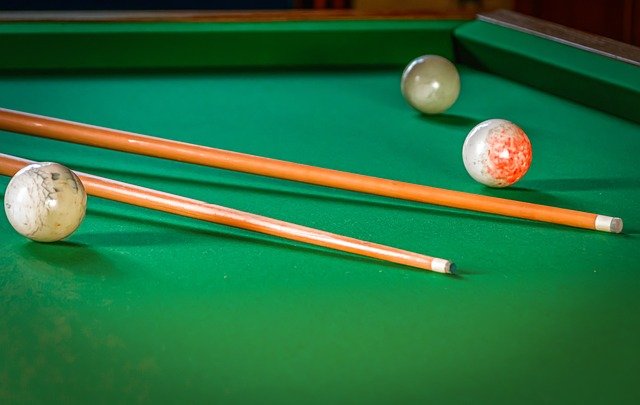When it comes to playing pool, one of the most important pieces of equipment is the pool cue. Whether you’re a seasoned player or just starting out, choosing the right cue can significantly impact your game. One of the key decisions you’ll need to make is whether to use a one-piece or a two-piece pool cue. Both types have their advantages and disadvantages, and the right choice for you will depend on your individual needs and preferences. In this article, we’ll explore the differences between one-piece and two-piece pool cues to help you make an informed decision.
One-Piece Pool Cues: Simplicity and Tradition
One-piece pool cues are exactly what they sound like: a single, solid piece of wood or other material, typically measuring around 57-59 inches in length. These cues are commonly found in pool halls, bars, and recreational facilities, where they are often provided for public use.
Advantages of One-Piece Pool Cues:
- Simplicity and Durability:
One-piece cues are known for their simplicity. With no joints or connections, there are fewer parts that can wear out or break. This makes them highly durable, which is one reason they are often used in commercial settings. - Consistent Feel:
Because one-piece cues are made from a single piece of material, they offer a consistent feel throughout the entire length of the cue. Many players appreciate this continuity, as it can contribute to a smoother, more predictable stroke. - Affordability:
One-piece cues are generally less expensive than two-piece cues, making them an attractive option for casual players or those on a budget.
Disadvantages of One-Piece Pool Cues:
- Inconvenient for Transport:
The biggest drawback of one-piece cues is their size. Their full length makes them cumbersome to transport, especially if you plan to take your cue to different locations. This inconvenience can be a deal-breaker for players who travel frequently or participate in tournaments. - Limited Customization:
One-piece cues are typically mass-produced and may not offer the same level of customization as two-piece cues. This can be limiting for players who want to tailor their cue to their specific preferences.
Two-Piece Pool Cues: Flexibility and Portability
Two-piece pool cues are designed to be taken apart into two separate sections, usually at a joint located in the middle of the cue. This design offers greater flexibility and convenience, making two-piece cues a popular choice among serious players and professionals.
Advantages of Two-Piece Pool Cues:
- Portability:
The ability to break down a two-piece cue into two smaller sections makes it much easier to transport and store. Many players carry their two-piece cues in specially designed cases, allowing them to bring their cue to different venues with ease. - Customization Options:
Two-piece cues offer a wide range of customization options. Players can choose from different types of shafts, joints, and butts, allowing them to create a cue that perfectly matches their playing style. Additionally, the interchangeable nature of two-piece cues means that individual components can be replaced or upgraded without purchasing a completely new cue. - Professional Quality:
Many high-end cues used by professional players are two-piece cues. The precision and quality that can be achieved with modern manufacturing techniques make two-piece cues a preferred choice for those who take their game seriously.
Disadvantages of Two-Piece Pool Cues:
- Potential for Wear and Tear:
The joint in a two-piece cue is a potential point of weakness. Over time, the connection between the two sections can wear out, leading to a less secure fit and potentially affecting the cue’s performance. However, high-quality joints are designed to minimize this issue. - Higher Cost:
Two-piece cues tend to be more expensive than their one-piece counterparts. The added complexity in their design and the customization options available contribute to their higher price point.
Which Cue is Right for You?
The decision between a one-piece and a two-piece pool cue ultimately comes down to your individual needs and preferences.
- Casual Players: If you’re a casual player who mostly plays at home or in a local bar, a one-piece cue may be all you need. Its durability and simplicity make it a reliable choice for recreational play, and its lower cost is an added bonus.
- Serious Players and Competitors: If you’re serious about your game or participate in tournaments, a two-piece cue is likely the better option. The portability, customization options, and professional quality of two-piece cues make them ideal for players who want to refine their technique and take their cue with them wherever they go.
- Travelers: If you often play in different locations, the convenience of a two-piece cue cannot be overstated. Being able to break down your cue and carry it in a compact case makes it much easier to transport, ensuring that you always have your preferred cue with you.
Conclusion
Choosing between a one-piece and a two-piece pool cue is an important decision that can affect your enjoyment and performance in the game. While one-piece cues offer simplicity and durability, two-piece cues provide flexibility, portability, and a higher level of customization. Consider your playing style, how often you travel, and your budget when making your decision. Ultimately, the right cue for you is the one that feels comfortable in your hands and helps you play your best game.



